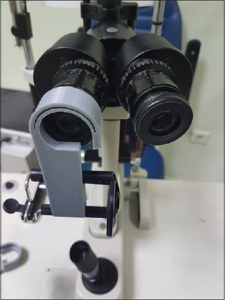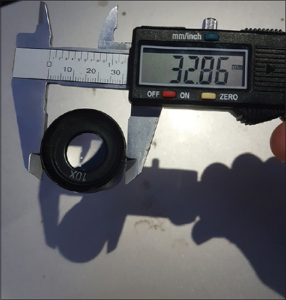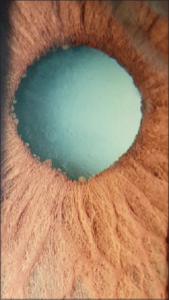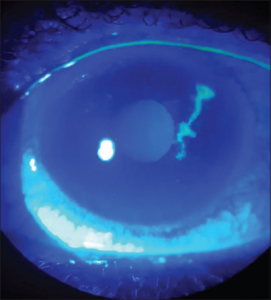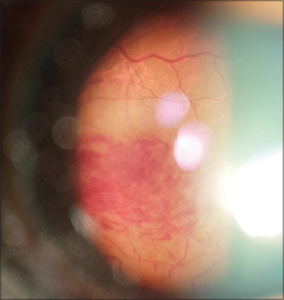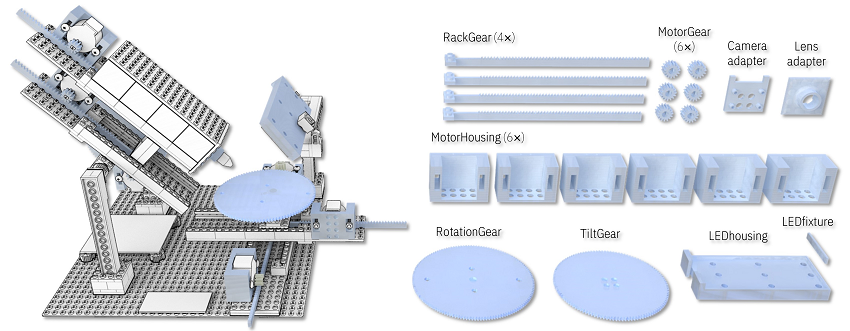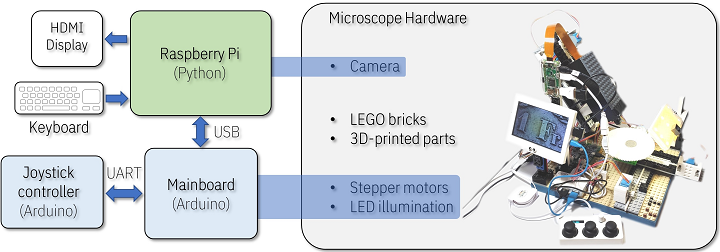A trio of researchers from hospitals in Egypt and India recently published a paper, titled “Custom-made three-dimensional-printed adapter for smartphone slit-lamp photography,” about their work designing a custom 3D printed smartphone slit-lamp adapter for photography applications in ophthalmology. A slit-lamp consists of a high-intensity light source, used with a biomicroscope, that can be focused to shine light into the eye for examination of the anterior and posterior segments in order to diagnose many conditions, like macular degeneration, cataracts, corneal injuries, and a detached retina.
Many people have smartphones these days, and they are being paired more often with 3D printing for diagnostic and imaging purposes, especially in the offices of eye doctors.
“Smartphone photography in ophthalmology has a wide variety of uses including examination with or without other examination tools such as slit lamp or condensing lenses,” the researchers wrote. “Smartphones can be used for fundus photography,[2],[3],[4] slit-lamp photography,[5] microscope-free anterior segment photography,[6] gonioscopy,[7] and more.[5]“
3D printed adapters can help make these tasks more efficient, as they are a quick, low-cost option. Custom adapters are built for just one smartphone design and slit lamp, while universal adapters can be adjusted to fit many designs. There are pros and cons for each option, which is why these researchers chose to “combine the advantages of both approaches” for their 3D printed smartphone slit-lamp adapter.

Two copies of the blink 3D printed slit-lamp adapter (in gray and black ABS material) fixed to universal smartphone holders.
“It is built upon a commercially available part used in selfie sticks and tripods which is used to hold the phone,” they explained. “The rest of the adapter is designed and 3D printed to enable attaching the mobile with that holder to the selected eyepiece.”
The goal was to make a design that complements different slit-lamps and automatically fits the microscope eyepiece that slides into the adapter; gravity, plus the weight of the smartphone, will keep it in place. Then all of you have to do is place the phone’s camera against the eyepiece. The team named their creation Blink, for its “ease of use and quick adjustment like in a blink of an eye.”
After they chose their target slit-lamp microscope, the researchers used Vernier calipers to measure the eyepiece, and used the dimensions to create a CAD model of the adapter in Tinkercad. They refined the model using SketchUp, and prepared it for printing with Repetier software. The adapter was then 3D printed out of ABS material on a Rostock MAX v2 3D printer from SeeMeCNC.
The 3D printed adapter was then fixed to the universal smartphone holder, and finally the fitting was “tested and refined to account for manufacturing tolerances.” Once the smartphone was placed in the holder, the device was attached to the slit-lamp’s eyepiece for easy imaging.
“The blink 3D-printed smartphone slit-lamp adapter was successfully designed, modeled, 3D-printed, and tested,” the researchers wrote. “Each type of slit-lamp eyepiece required a small modification in the 3D design based on measurements. Good-quality images could be captured in diffuse, slit, retro, and cobalt-blue illumination.”
The time it took to remove and modify the device was only seconds, which makes the 3D printed adapter very useful in slit-lamp photography.
“More units can be easily made by printing the same CAD file and fixing it to the universal smartphone holding bracket,” the researchers noted.
Additionally, the team confirmed that they could image the fundus – the part of the eyeball opposite the pupil – using a 90D lens.
“Our article describes the process of designing and building a smartphone slit-lamp adapter to solve the problem of slit-lamp photography,” the researchers concluded. “The cost of 3D printing a small part such as the adapter described here is small and can be done at a 3D printing shop which is available in all major cities in India, Egypt, and many other countries. Most of the work involved is in designing the CAD model according to measurements and physical constraints.
“Development of this type of innovation from idea to virtual design to hardware does not need much time or money – only an innovative mind and the drive to learn these new techniques.”
Discuss this story and other 3D printing topics at 3DPrintBoard.com or share your thoughts in the Facebook comments below.
The post 3D Printing in Ophthalmology: Smartphone Slit-Lamp Adapter for Diagnostics appeared first on 3DPrint.com | The Voice of 3D Printing / Additive Manufacturing.

